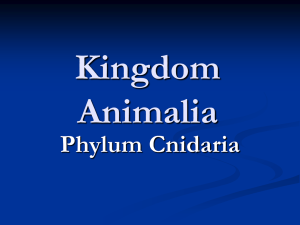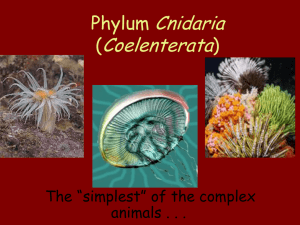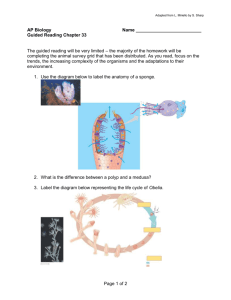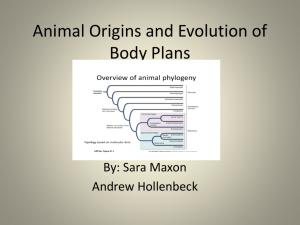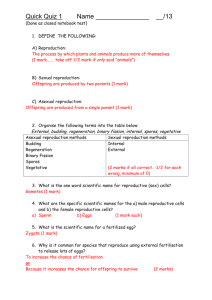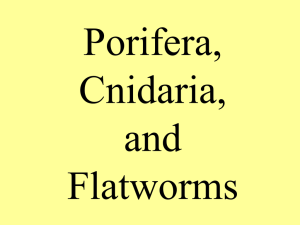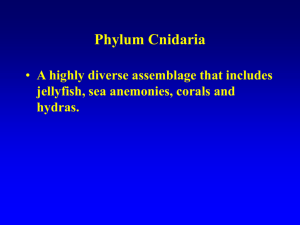Cnidarian Reproduction & Life Cycle Presentation
advertisement
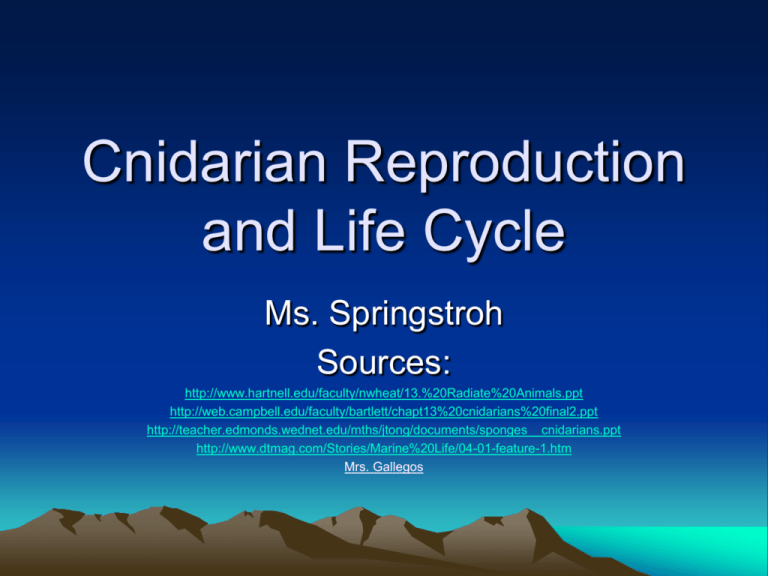
Cnidarian Reproduction and Life Cycle Ms. Springstroh Sources: http://www.hartnell.edu/faculty/nwheat/13.%20Radiate%20Animals.ppt http://web.campbell.edu/faculty/bartlett/chapt13%20cnidarians%20final2.ppt http://teacher.edmonds.wednet.edu/mths/jtong/documents/sponges__cnidarians.ppt http://www.dtmag.com/Stories/Marine%20Life/04-01-feature-1.htm Mrs. Gallegos Two methods of reproduction • Asexual – Typically used by polyps (especially hydrozoans) • Sexual – Typically used by medusae Asexual Reproduction In some species, new individuals simply grow and split off from the body of another. In this case, the new animal is genetically identical to its “parent”. This is called “budding.” Here is a budding Hydra. Advantages to budding? Disadvantages to budding? Sexual Reproduction in Jellyfish • Step 1: Male medusae release sperm, female medusae release eggs into the water. Sperm and egg join together in a process called ________. • Step 2: When sperm and egg fertilize one another, a ________ results. The zygote turns into a planula (larva), which settles on a substrate and grows into a polyp. • Step 3: The polyp then produces tiny ______ by asexual means (typically by budding). Voila, we have more medusae! Then, Step 1 begins again. Advantages of sexual reproduction? • Genetic diversity • Can move around/disperse • Parent does not have to share nutrients w/ offspring Disadvantages of sexual reproduction? • Have to find a mate • Low sperm count can lead to a lack of fertilization • Sperm or eggs can be eaten Some types of cnidarians, like the anemone, have completely lost the medusa stage. The zygote (fertilized egg) of an anemone becomes a baby polyp, and forever remains a polyp. Others, like many jellyfish, have lost the polyp stage. In this case, the zygote develops into a tiny medusa. Phylum Cnidaria Life Cycle Animation • http://bcs.whfreeman.com/thelifewire/conte nt/chp32/32020.html Microscopes • Look at a slide of Obelia. • Draw what you see on your paper. Your drawing should be within a circle, representing your “field of view”. • Label each drawing as a polyp or a medusa. • Which class of cnidarians do you think Obelia is found under? Be prepared to justify your answer!
